Trap beats have a certain allure that people go absolutely crazy for, blending gritty rhythms with smooth melodies.
To get it just right, it requires skill and a basic understanding of rhythm and sound.
Plus, you’ll need elements of creativity and innovation to really help them stand out.
Producing a trap beat that resonates requires a delicate balance between powerful bass lines, intricate drum patterns, atmospheric synths, and dynamics/space.
In today’s article, we’ll break down everything you need to know (in-depth) about how to make trap beats, like:
- Kick drum basics ✓
- Snare pattern variations ✓
- Bassline techniques ✓
- Hi-hat complexity ✓
- Melody creation ✓
- Advanced sound design ✓
- Mixing & mastering for clarity ✓
- Drum pattern experimentation ✓
- Vocal chops, effects, and other elements ✓
- Creative use of reverb and delay ✓
- Music production tips and tricks ✓
- Much more ✓
You’ll know everything about what makes this genre so unique and intriguing so you can learn everything about how to make trap beats that stand the test of time.
Plus, have the tools to create trap beats of your own that are rich in texture and depth, ensuring your tracks/sounds rise above all the rest.
They won’t only hit hard, they’ll blow the competition out of the water.
So, let’s dive in…
Table of Contents
How to Make Trap Beats: Getting Started

Trap beats have such a unique sound because they combine the aggressive punch of hip-hop with the rhythmic complexity of EDM.
Learning how to make trap beats involves knowing about the basics:
- Booming 808 basses
- Crisp snares
- Rapid-fire hi-hats
- Atmospheric synths
These elements work together to create the distinctive-sounding vibe that has made trap music one of the most popular genres in the world.
When people listen to trap it’s a whole experience.
And, as a producer, understanding these elements not only helps you create trap beats that stick with listeners but also lets you experiment and up your game.
Pro Tip: Setting up your Digital Audio Workstation (DAW) is your first step in learning how to make a trap beat. Whether it’s FL Studio, Ableton Live, or Logic Pro, the choice of DAW can significantly impact your workflow.
Another super important key factor is your selection of samples and loops.
For trap beats, prioritizing high-quality trap drum samples (especially kick drums and snares) are keys to success.
Incorporating a variety of loops can add depth to your tracks, but the magic lies in manipulating these loop variations to fit the unique vibe you’re aiming for.
So, make sure to experiment with different samples and loops to broaden your horizons and find your signature sound.
Building the Foundation: Drums and Bass
Now, before we get into the individual elements that make up the rhythmic and melodic sounds of trap beats, it’s important to understand how the drums and bass line blend. The interplay between the kick drums, snares, hi-hats, and bass creates the aggressive and captivating rhythm that you hear across all trap music. Getting this foundation right is essential for you to play around with the overall vibe of your track.
-
Kick Drum Techniques

When you make a trap beat, kick drums are your foundation, giving your track its overall energy and feel.
To start off, try layering two distinct kick samples to achieve the perfect balance between punch and low-end depth 一 the two keys here.
For example, combine a tight, punchy kick that excels in the mid-frequency range with a deep 808 kick designed to dominate the sub-bass spectrum.
It makes sure your kick drums cuts through on smaller speakers without losing their powerful presence in a club setting.
Always remember that processing is key here…
Applying subtle distortion to the 808 layer can add harmonics, making it more perceptible on devices with less bass response, while a touch of compression on the punchy kick enhances its impact.
Beyond layering, sidechain compression allows the kick to punch through the mix, especially when competing with a dominant bassline.
By routing your bass track to a compressor on your kick drum track, you create a dynamic interaction where the bass momentarily ducks with each kick hit.
This creates a rhythmic pulsing effect that adds depth to the groove.
Pro Tip: Automate the side-chain’s threshold or ratio settings during different sections of your track to vary the intensity of this effect.
It will make your verses feel more laid back and choruses more intense.
This technique not only ensures clarity and cohesion between your kick and bass but also contributes to the dynamic tension/release that keeps listeners hooked.
-
Snare Patterns for Trap Beats
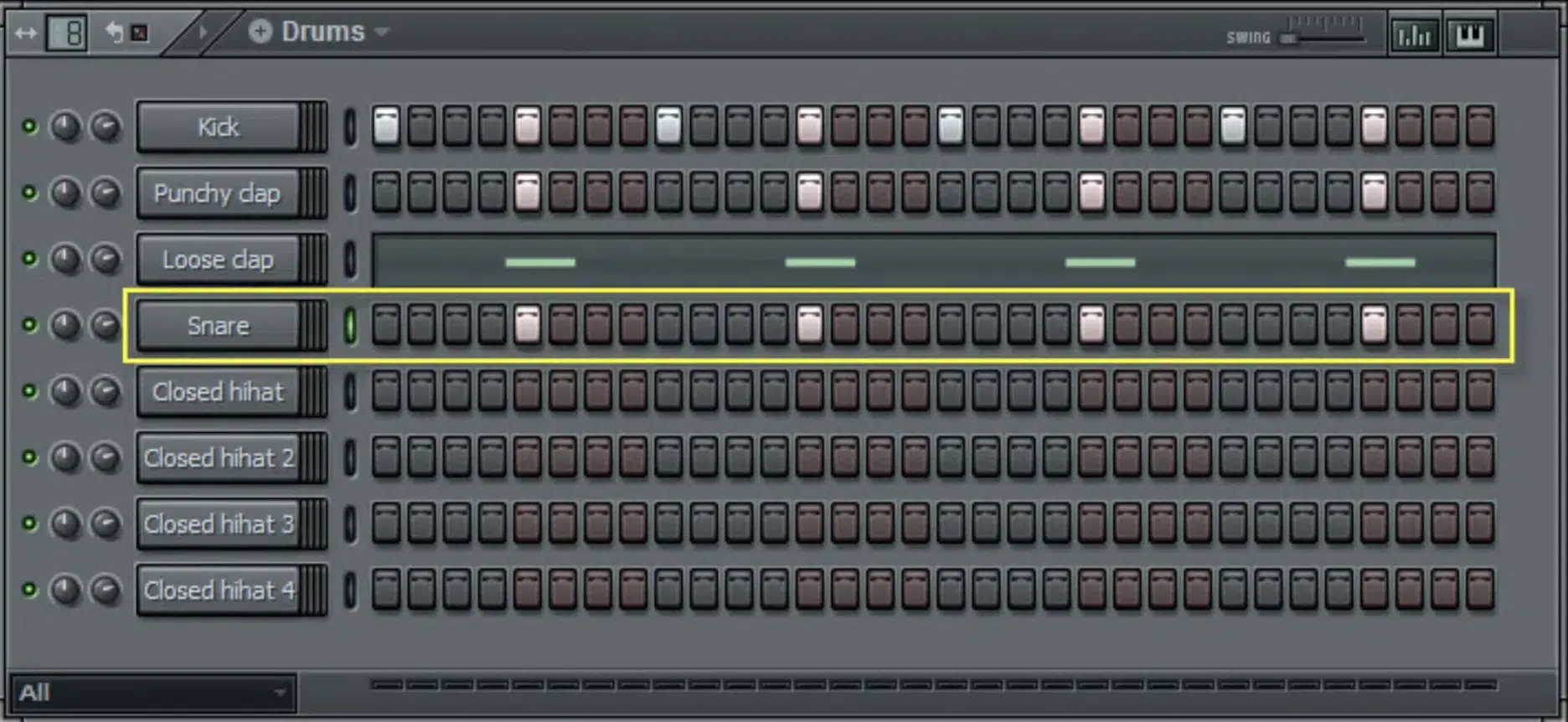
Snares are essentially the counterpoint to your kick drums, providing rhythm and snap.
A typical trap snare pattern places the primary snare hit on the third beat of each bar, but I recommend you throw in some double hits or ghost notes for added complexity.
To achieve the crisp, sharp snare sound characteristic of trap, layer a:
- Tight, high-pitched snare around 200 Hz.
- Clap or snap sample that has a broad frequency range.
EQing should focus on enhancing the snap (around 2000-4000 Hz) and controlling the tail with a high-pass filter.
Also, apply a slight reverb with a short decay (around 1.2 seconds) to add space without overwhelming the mix/other sounds.
NOTE: For dynamic interest, program snare rolls leading into the fourth beat of every 8 bars 一 increasing in velocity to build tension.
Remember, when you’re learning how to make a trap beat, that trap tension is non-negotiable; it’s what reels people in and keeps them hype for that ultimate release.
-
Bassline Basics
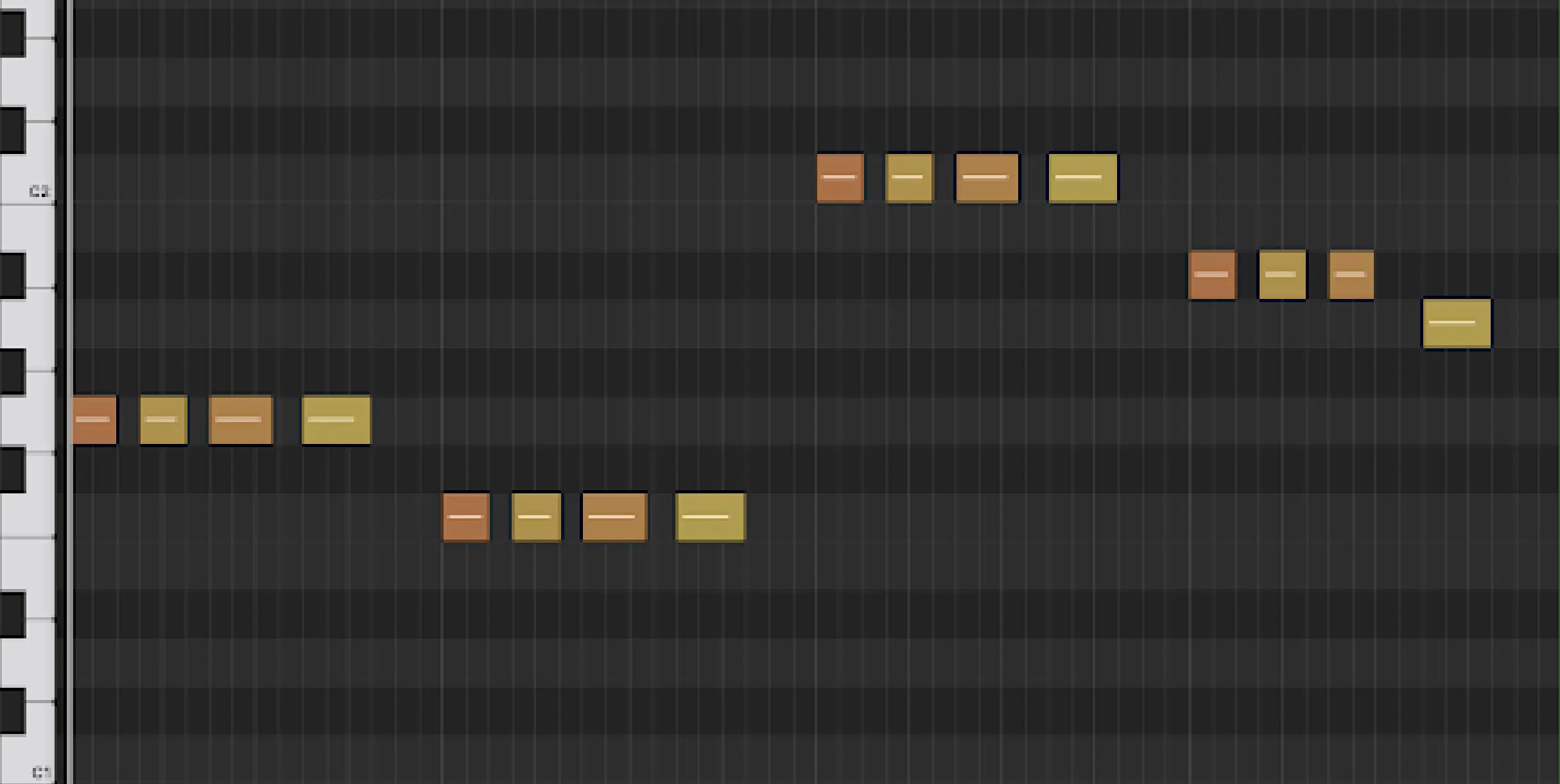
The bassline in trap music does more than just provide the low-end; it’s the driving melody of the entire track.
When you’re first starting out, try using an 808 bass sample tuned to the key of your track, with glide or portamento settings for sliding notes that add a melodic element.
When programming your bass line, make sure to mix long sustained notes at the root note of your chords with quick, staccato octave jumps or fifths.
This creates that irresistible rhythm and interest that make a trap beat special.
EQing should focus on enhancing the sub-bass (below 60 Hz) while cutting around 100-200 Hz to leave room for the kick.
Use distortion or saturation sparingly to add harmonics and make your bass line audible on smaller speakers.
Also, side-chain your bassline to the kick with a ratio of 3:1 to ensure the kick remains clear and punchy 一 a sign of a great trap beat.
-
Hi-Hats and Rhythm Complexity
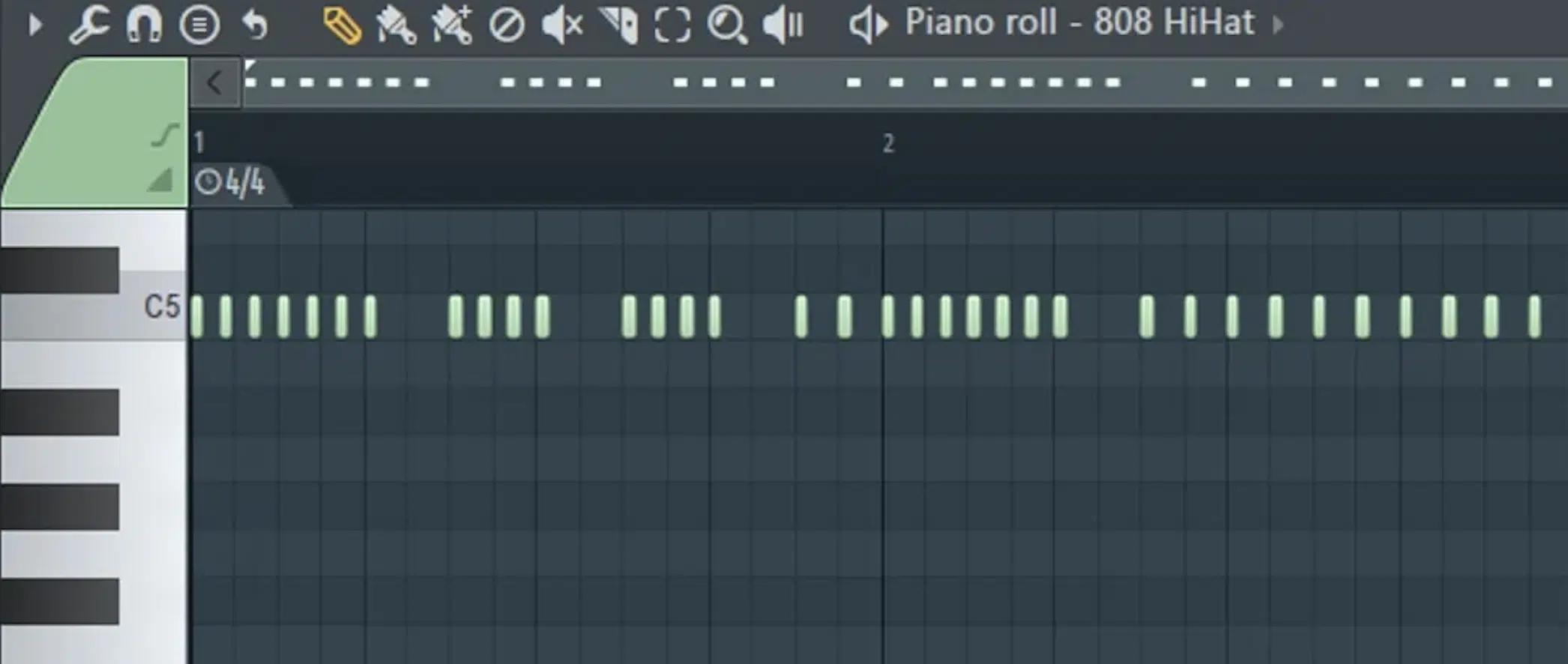
Hi-hats Hi-hats are the secret weapon in a trap beat that provide the high-frequency contrast to the low-end dominance of the kick and bass.
They add excitement and complexity to the rhythm, often playing at high speeds to create a sense of urgency and intensity.
The key to effective hi-hat programming is variation, like combining:
- Closed hi-hats
- Open hi-hats
- Hi-hat rolls
- Stutters
It can transform a simple beat into a rhythmic masterpiece that sounds exactly like something your favorite trap artists would rap over.
Hi-hat rolls, in particular, are a signature element of trap songs 一 adding a burst of energy that can highlight sections of the track or lead into transitions.
By varying the velocity and pitch of the rolls, you can create patterns that are dynamic and expressive.
Automation can also play an important role in hi-hat programming.
It allows you to manipulate the timbre and spatial positioning of the hi-hats throughout the track, keeping the listener engaged with a constantly evolving soundscape.
Remember, when mixing hi-hats, it’s important to find the right balance in the frequency spectrum.
Hi-hats should cut through the mix without clashing with the snares or cymbals.
EQ and high-pass filtering can help isolate the hi-hats 一 ensuring they complement rather than compete with the other percussive elements.
Experimentation with panning can also add a spatial dimension to your hi-hats and make your sounds more immersive.
Pro Tip: Breaking it Down

Start with a closed hi-hat sample that is crisp and bright, programming a basic eighth-note pattern as your rhythmic foundation.
Then, introduce complexity by adding sixteenth and thirty-second note rolls at strategic points 一 typically at the end of every 2 bars or leading into a snare hit.
Automating the velocity of these rolls creates a more natural and dynamic feel.
Panning different hi-hat hits slightly left and right can add a stereo spread; making the beat more immersive.
Apply a high-pass filter around 10 kHz to ensure clarity and add a slight touch of reverb with a low decay (below 1 second) to blend them into the mix without losing definition.
The Melodic Components
Transitioning from the rhythmic backbone of trap beats to the melodic components introduces a new layer of creativity and expression. While the snappy drums and bass provide the track’s energy and drive, melodies, synths, and pads offer emotional depth and atmosphere, setting the mood and character of your trap beat. Creating sick melodies and textured synths is essential for creating a trap beat that resonates on a deeper level with your listeners.
-
Creating Melodies in Trap Music
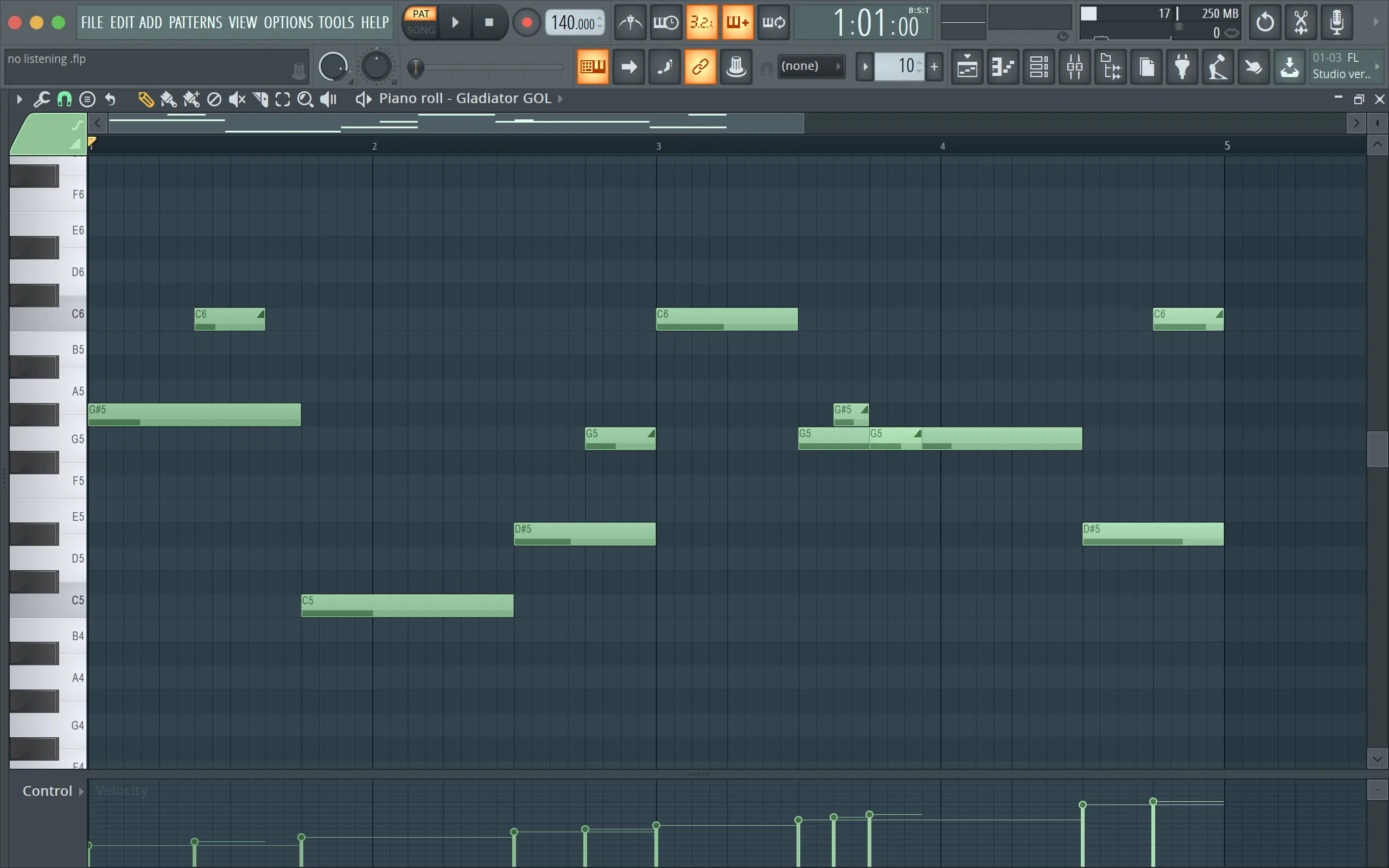
Melodies in trap music walk a fine line between simplicity and complexity, changing up through the beat to create an infectious hook or a haunting atmosphere.
The key to a memorable melody is its ability to connect with people emotionally.
Using a variety of virtual instruments and different sound sources (from traditional keys and strings to futuristic synths and sampled vocals) can add depth and diversity to your melodic content.
When composing melodies, always consider the role they play in the overall structure of the track.
A trap melody can be:
- The main theme (recurring throughout the track to provide a sense of unity).
- Used more subtly (to highlight certain moments or create contrast).
Experimenting with different scales and modes can also help with some interesting results 一 giving your trap beat a unique edge.
Incorporating techniques like call-and-response between different melodic elements can add a dynamic interplay that enhances the track’s complexity and interest.
-
Utilizing Synths and Pads
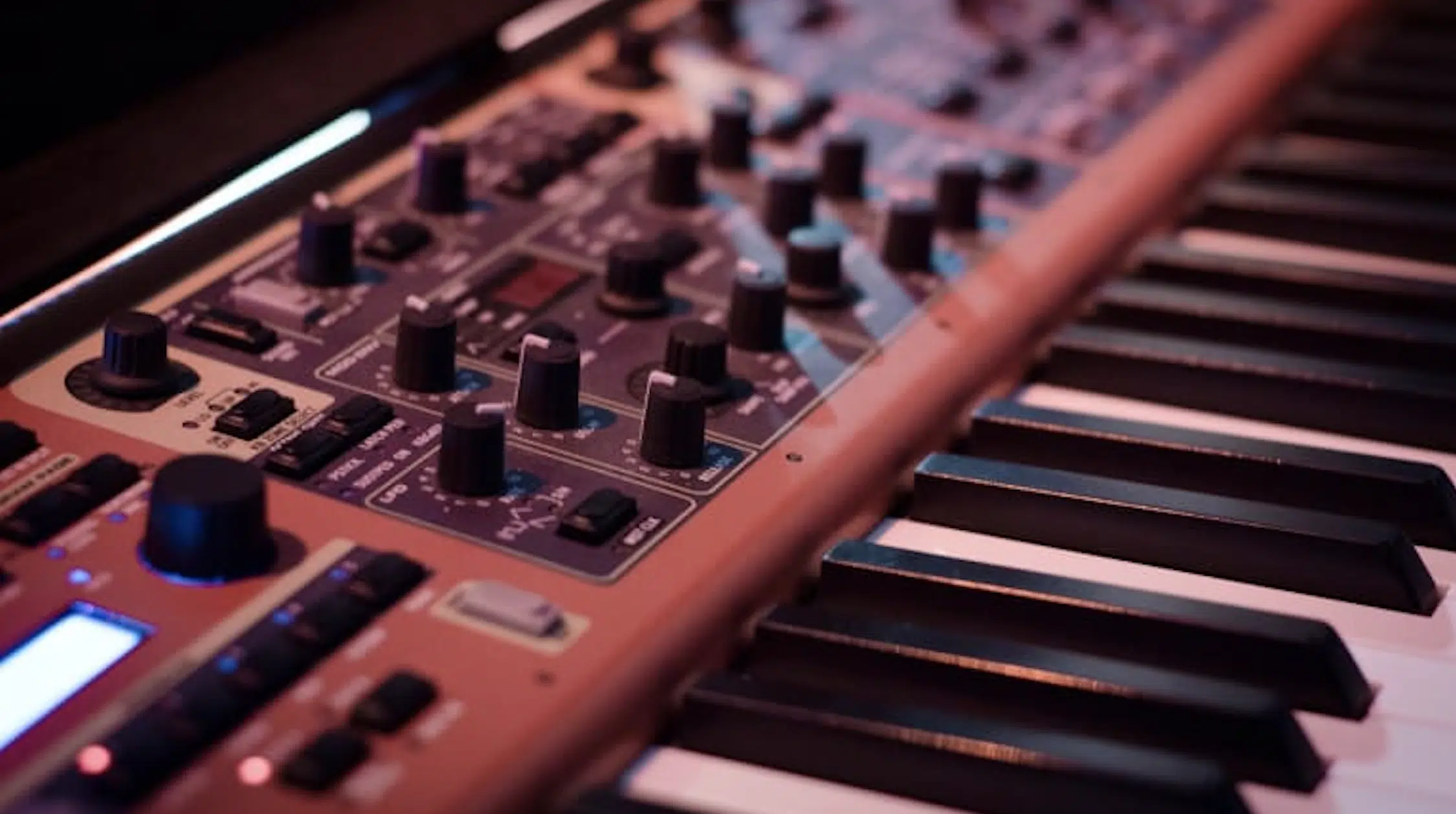
Incorporating synths and pads within your trap beat production can transform a simple rhythm into an unforgettable show-stopper.
When you carefully select and play with synth sounds, you’re laying the foundation for a track that people won’t forget.
Remember to aim for those that offer both grit and melody.
When you make a trap beat that really captivates your listeners, it’s not just about making it loud…
It’s about creating the perfect foundation where each element complements the others.
For instance, choosing a synth with a slightly detuned lead can add an intriguing, haunting quality to your melody.
On the other hand, an analog-style pad brings warmth and depth to your mix and can be the ambient cushion that supports the more aggressive drum elements.
When you make a trap beat, pads are just as important in establishing the emotional back story as the synth itself.
Experimenting with ambient pads that feature slow attack times and generous reverb settings can create a dream-like atmosphere.
It turns the background of your beat into a mind-blowing experience.
Therefore, it only enhances the overall vibe but also allows for moments of contrast when the beat drops out 一 leaving a lush pad to fill the space.
By adjusting the EQ and applying subtle side-chain compression to these pads, you ensure they enhance rather than overwhelm the mix.
It allows the kick and snare to punch through clearly.
This thoughtful integration of synths and pads will make your trap beat not only loud and commanding but also emotionally resonant and dynamically impactful.
-
Counter Melodies and Their Role
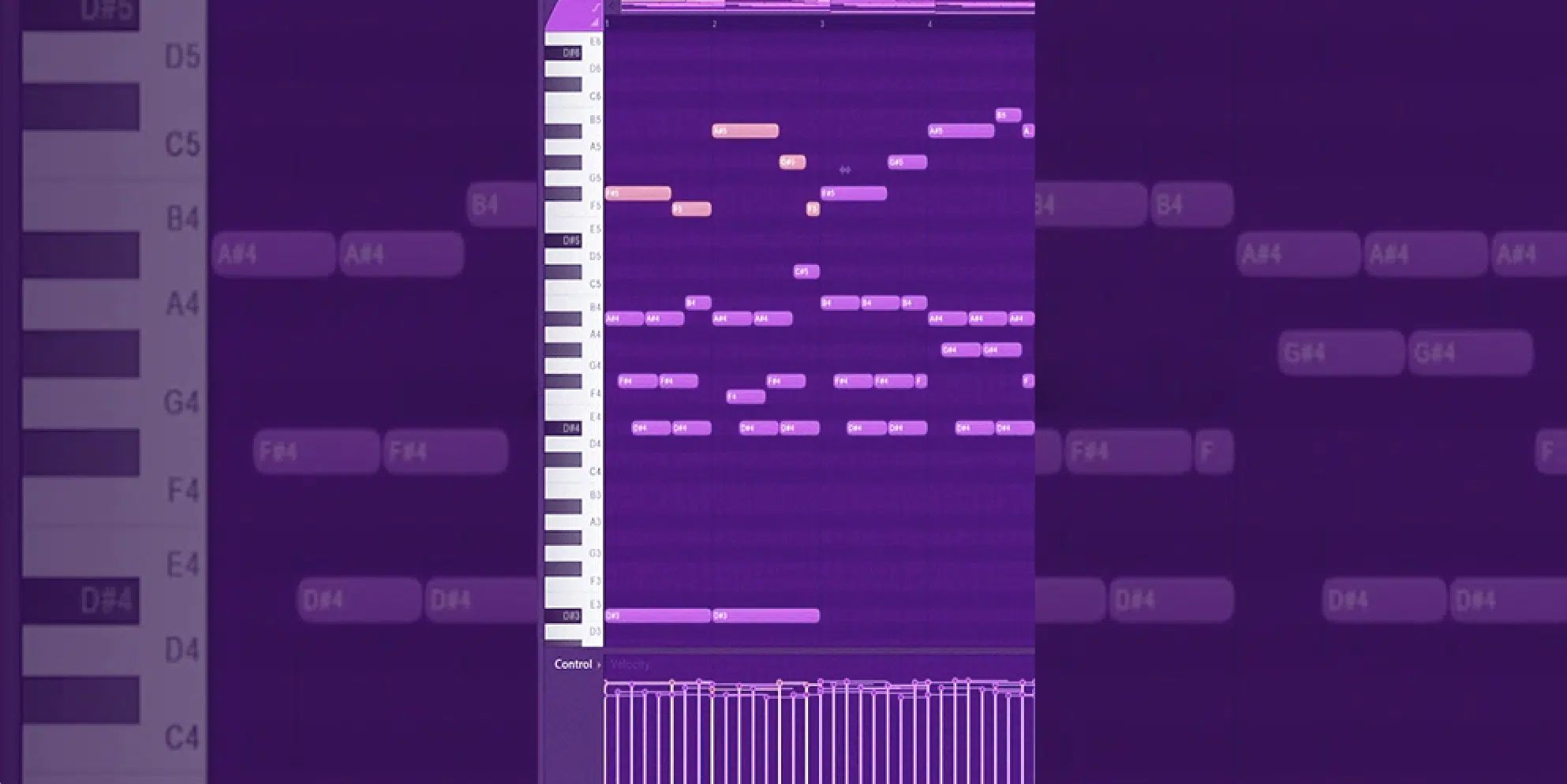
Counter melodies in trap music act as a secondary voice, which is a common way to build that perfect harmony and rhythm dynamic with the main melody.
It adds complexity and interest to your arrangement.
Creating the perfect counter melodies requires a good understanding of music theory and composition techniques, as well as creativity and intuition.
The counter-melody should contrast yet complement the main melody, weaving in and out of the spotlight to enhance the track’s narrative without causing clutter.
Utilizing different timbres and registers for your counter melodies can help differentiate them from the main melody.
It makes each stand out while contributing to a cohesive sound.
Implementing techniques such as inversion, retrograde, or rhythmic displacement can generate intriguing counter melodies that captivate the listener.
The strategic use of effects like delay and panning can further define the space each melody occupies, adding to the dynamic inter play between the musical elements.
-
Sound Design for Trap Beats
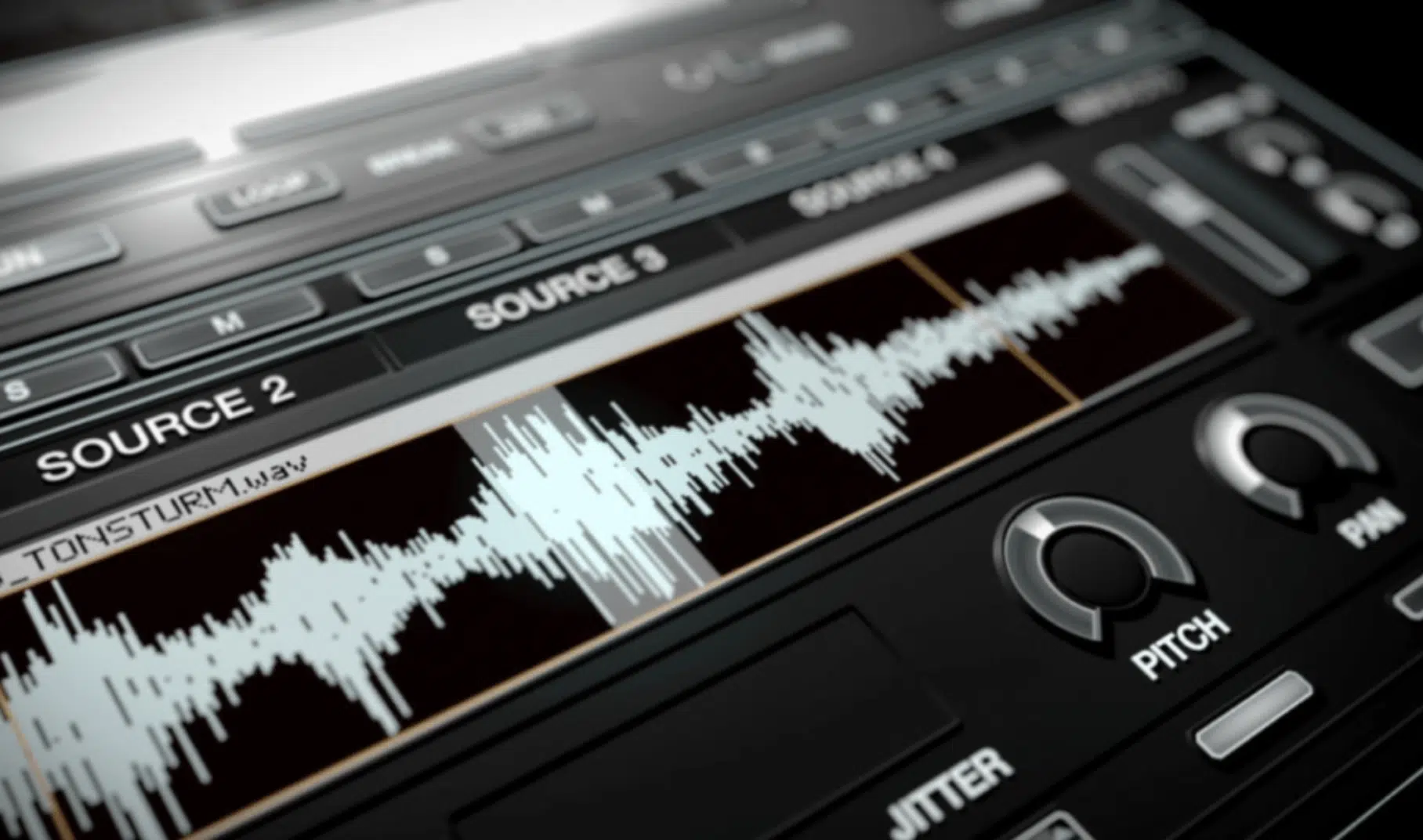
The sound design for trap beats is about more than just choosing the right sounds.
It’’s about shaping and manipulating those sounds to fit the unique character of your track so that people really understand its energy.
From the gritty texture of the bass to the crispness of the snares and the ethereal quality of the synths, each element should carefully contribute to the overall vibe of the beat.
This involves not just the selection of two samples and virtual instruments but also the application of:
- Effects
- Modulation
- Processing techniques
Attention to detail in sound design can set your trap beats apart 一 making them memorable and impactful.
Experimentation is key, whether it’s through synthesizing your own sounds, processing samples beyond recognition, or creatively applying effects like distortion, bit-crushing, and modulation.
This exploration of sound not only helps in defining your signature style but also pushes the boundaries of what trap music can be.
It invites the listeners into a sonic world uniquely your own.
Arranging Your Trap Beat
As we transition from the individual components to the arrangement of your trap beat, it’s important to consider how each element fits into the larger structure of your track. Arrangement is where creativity meets precision, requiring a balance between innovation and skill to bring that trap sound. The way you structure your track can greatly affect its impact, so pay close attention.
-
Structuring Your Track/Sounds: Quick Recap
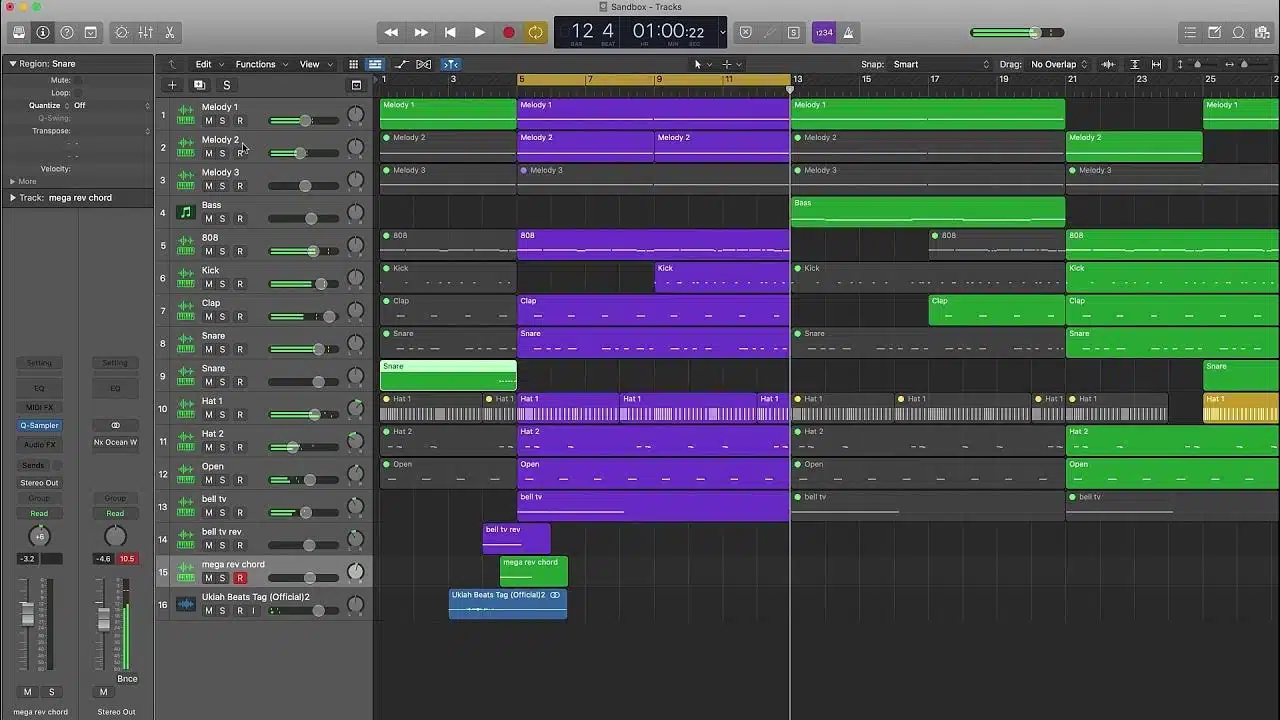
A well-structured trap beat is like a story, with a beginning, middle, and end that takes the listener on an emotional (and rhythmic) journey.
The intro sets the stage, introducing the main themes, elements, and other sounds in a way that captures the listener’s attention and doesn’t let go.
The verse and chorus sections expand on these themes, with the chorus being the climactic centerpiece of the track.
Variations and bridges add interest and diversity 一 preventing the song from becoming too boring or basic.
When arranging your trap beat, always think about the dynamic flow of energy throughout the track and how it will hit your listeners.
Building tension and release through the use of risers, breaks, and drops can create a more engaging listening experience.
Paying attention to the length and pacing of each section ensures that the MIDI track maintains momentum and keeps the listener engaged from start to finish.
Effective use of silence and space can also add dramatic impact, highlighting key moments in the beat.
-
Creating Movement and Energy
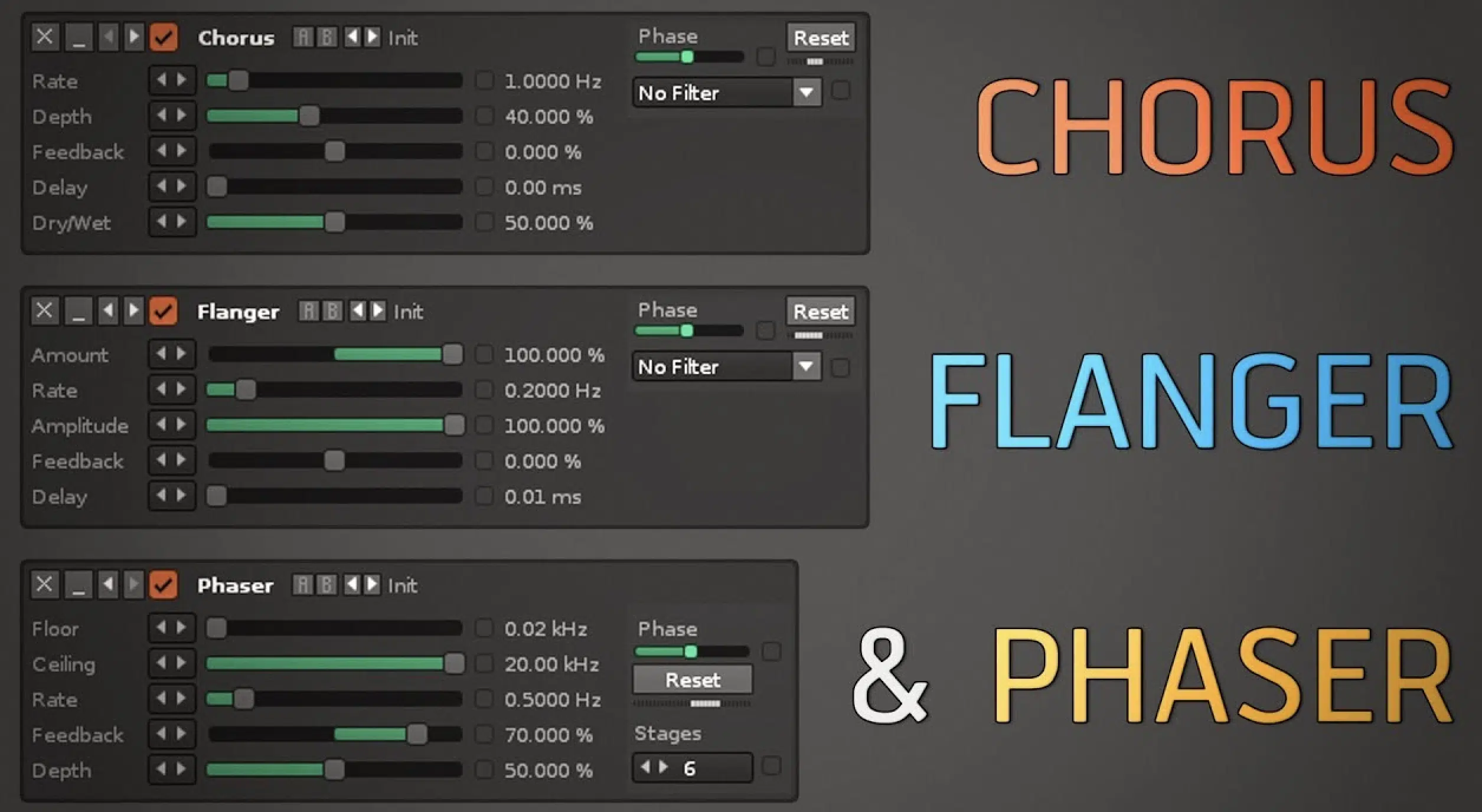
When you’re learning how to make trap beats, remember that movement and energy are essential to keeping them dynamic and captivating.
This involves more than just the tempo and rhythm, but rather how the key elements/sounds interact and evolve over time.
Automation plays a top role in creating movement 一 allowing you to manipulate volume, pan, filters, and effects parameters to breathe life into your beat.
Subtle changes in the intensity and texture of elements like the bass, snappy drums, and synths can keep the energy flowing and prevent the track from feeling static.
One technique for adding movement is the use of modulation effects, which can add a sense of motion to pads, synths, and even bass lines, like:
Playing with the stereo field through panning and stereo width adjustments when you make a trap beat can also enhance the sense of more space and movement.
It makes the trap song feel more alive, which is what you’re aiming for.
Additionally, incorporating breakdowns and build-ups can dramatically affect the track’s energy, creating peaks and valleys that keep the listener engaged and anticipating what comes next.
-
Mastering for Loudness and Clarity
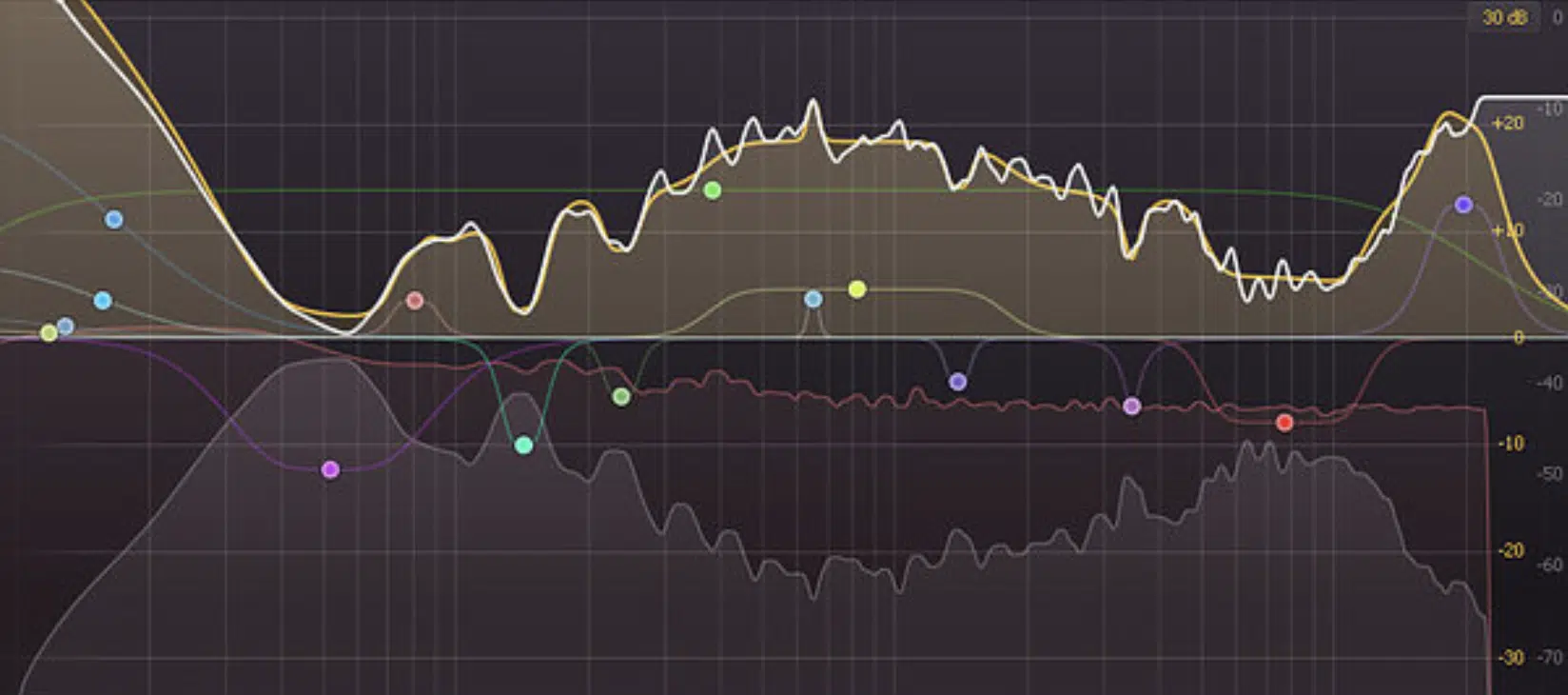
Mastering is the final touch that prepares your trap beat for the world, focusing on overall loudness, EQ balance, and dynamic range.
The aim is to ensure your track competes in terms of volume and clarity with professional releases.
A mastering chain typically includes:
- EQ 一 To fine-tune the frequency balance
- A stereo enhancer 一 To broaden the mix
- A limiter 一 To increase the overall loudness without clipping or unwanted distortion
Attention to the dynamic range during mastering is super important…
While a loud track can grab the listener’s attention, too much compression can squash the life out of your beat, robbing it of its energy and impact.
It’s a delicate balance between loudness and dynamic sound expression.
Using reference tracks in similar genres can help guide your mastering process.
It ensures your song meets the industry standards of trap music while keeping its unique character and vibe.
Side note, if you want to learn all about LUFS, or discover the best mastering plugins, we’ve got you covered.
-
Experimenting with Different Drum Patterns
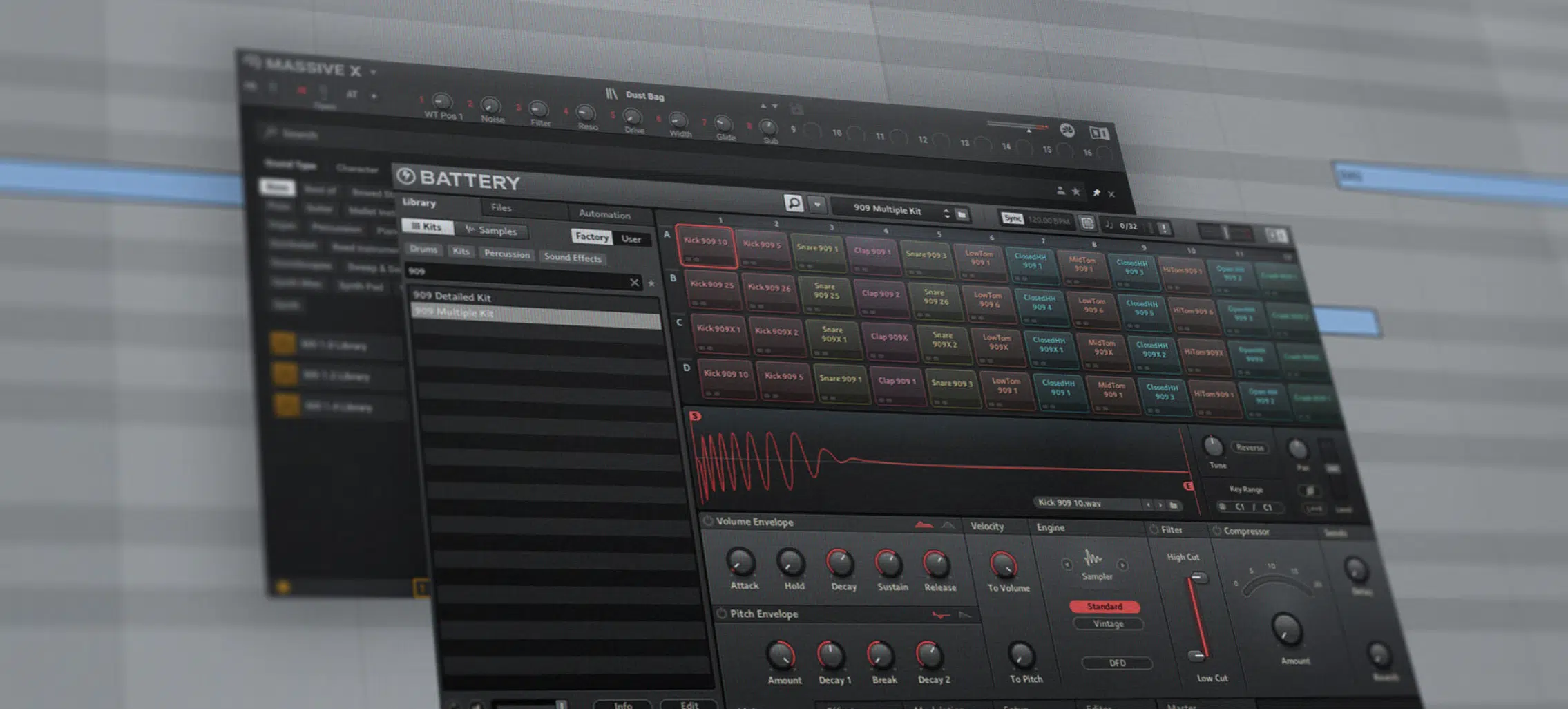
While traditional trap beats rely on certain rhythmic patterns, experimenting with unconventional drum patterns/arrangements can set your music apart.
Try breaking away from the standard patterns by incorporating:
- Polyrhythms
- Unusual time signatures
This not only challenges you as a producer but also captivates your audience with unexpected shifts and changes.
Experimenting with the textures and tones of your snappy drums (such as layering live drum samples with synthesized beats) can add a unique flavor to your track.
Automation can be a powerful tool in evolving your drum patterns over time.
NOTE: Automating parameters like pitch, filter cutoff, or decay on your snare or hi-hats can create a sense of progression and movement.
This helps each section of your track be distinct yet cohesive.
This dynamic approach to drum programming can elevate your trap beats 一 making them feel alive and constantly evolving.
-
Incorporating Vocal Chops and Effects
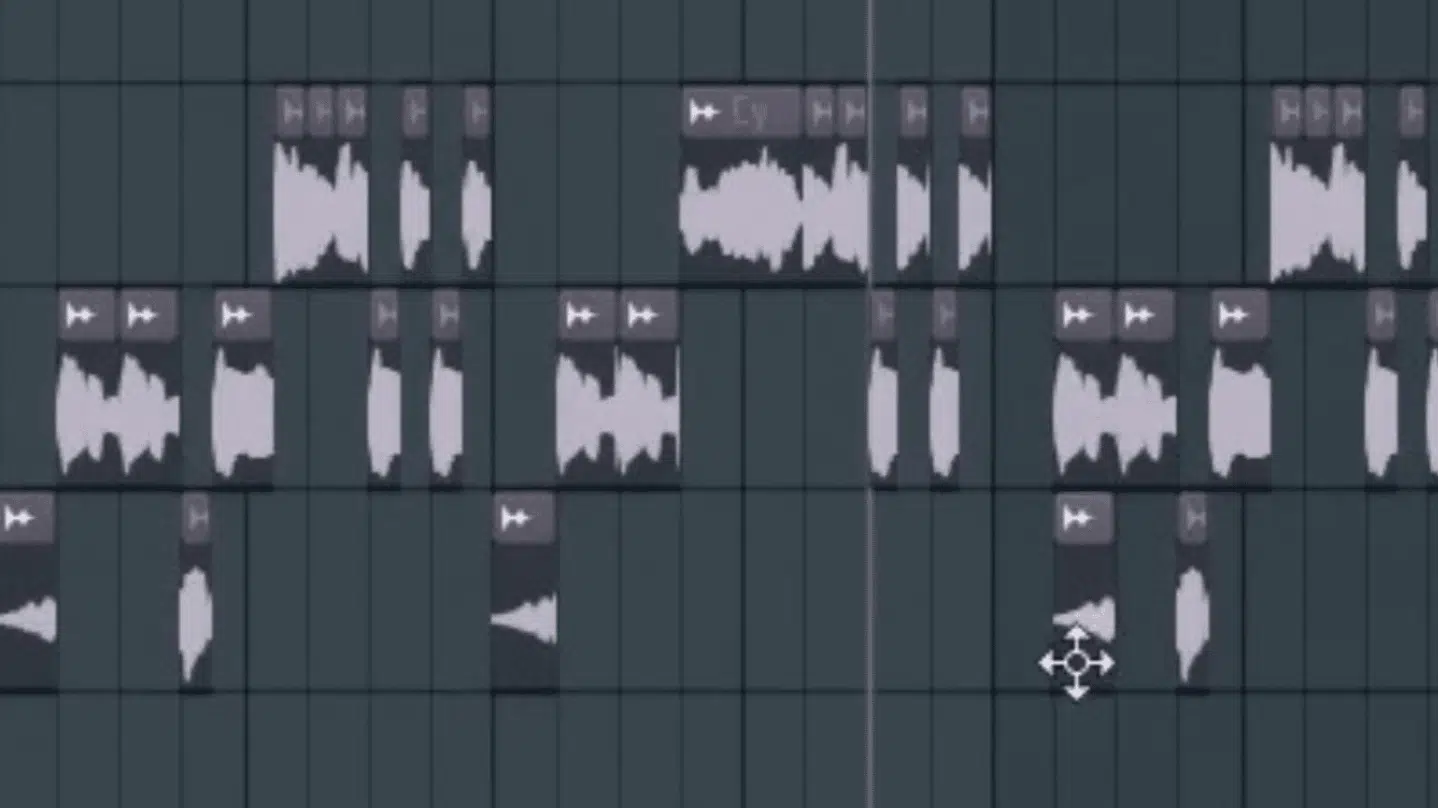
Vocal chops have become one of the most loved parts of trap beats; they have the power to elevate your tracks in a major way.
Sourcing vocals from acapellas or vocal sample packs, then slicing and processing them into short chops, allows you to create catchy hooks or textural layers.
Pitch shifting, time stretching, and applying effects like reverb, delay, and distortion can transform simple vocal samples into compelling elements of your beat.
NOTE: Layering vocal chops with synths or using them as counter melodies can also add depth and complexity to your arrangement.
Automating effects parameters on vocal chops over time can also introduce movement and variation, keeping the listener engaged.
Experimenting with different vocal processing techniques, such as formant shifting for a more synthetic sound or granular synthesis for atmospheric textures, can push the boundaries of your sound design.
As music producers, you should always be testing the limits.
How to Make Trap Beats: Final Thoughts
When you’re learning how to make trap beats, it’s all about blending the right elements together and mastering the nuances of each component.
You’ve got to experiment with sound textures, manipulate drum patterns, and make sure your melodies carry the emotional weight of the track.
This way, they’ll always bring that trap edge people love and are attracted to.
With the knowledge you’ve learned today, you’ll be knocking out trap beats that can compete with the best in the industry in no time.
And if you really want to elevate your trap production game, you’ve got to check out the most legendary Free Trap Sample Pack in the game.
It contains 60+ of the most professional, perfectly processed trap samples, loops, and MIDIs modeled off the styles of the biggest artists in modern music.
This includes artists like Future, Travis Scott, Lil Baby, and more.
So, needless to say, they can instantly enhance your trap beats (and skills) and ensure they’re on the same level as the greats.
Plus, all the files are cleared for personal and commercial use 一 giving you the freedom to use them in your music however you please.
So, go use the information we’ve provided to push the boundaries of trap beats and make an impact that people won’t soon forget.
Until next time…







Leave a Reply
You must belogged in to post a comment.